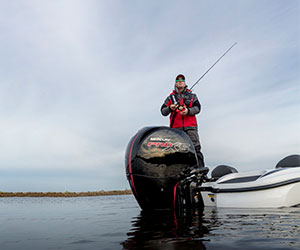Reports of dead or dying deer continue to pour into southern Michigan DNR offices.
So far, Berrien, Cass and St. Joseph counties have escaped the worst of epizootic hemorrhagic disease (EHD) while counties farther north and east have not.
As of last Friday, more than 1,700 dead deer have been reported throughout the Lower Peninsula the past few months.
Northern Indiana continues to be EHD free, according to district biologist Linda Byer, who said she’s received no calls about EHD outbreaks in her region.
That’s remarkable since EHD outbreaks have been confirmed not far from the state line and in southern Indiana counties.
Crane Pond Wildlife Biologist Ken Kesson, who has been assigned to track the virus in southern Michigan, said he’s had 11 dead deer reports from Cass County, one in Berrien, 33 in St. Joseph and 225 in Branch counties, all of which lie along the Indiana border. The hardest hit Michigan county is Iona, located between Grand Rapids and Lansing, where 1,103 dead deer have been reported since early August.
Of those reports from counties along the state line, two deer in Cass, three in St. Joseph and 6 in Branch were confirmed by lab tests as having succumbed to EHD.
However, Kesson said the DNR stops sampling dead deer in a township once the disease is confirmed there. “Once we confirm EHD in that township, we only keep track of the number of reports we get from that township,” he noted.
Confirmations have come from Newburg and Marcellus townships in Cass County and Rocky River and Flowerfield in St. Joe. Branch County townships include Union, Girad and Coldwater, although Kesson suspects Sherwood, Batavia and Butler results will prove positive as well.
The biologist, who said outbreaks tend to be sporadic, expects numbers to climb once more people get out into the woods and vegetation begins to fall back.
Last year, an estimated 300 deer died in Cass County, mostly in its western townships. Deer harvest was down 30 percent in Cass County last year, largely due to the EHD impact.
The virus is not transmissible to humans nor are humans at risk by consuming deer harvested in the affected area. EHD is carried by a small midge insect that breeds around the muck of low water areas. Deer are infected when bit by the small fly.
This year’s drought is said to produce the “perfect storm” for which the outbreak could be severe.
Infected deer lose their fear of humans, salivate heavily and will often seek comfort in or around water. Other signs may include blue-tinted tongue or eyes, ulcers on the tongue, sloughed hooves or an eroded dental pad.

















Connect With Us